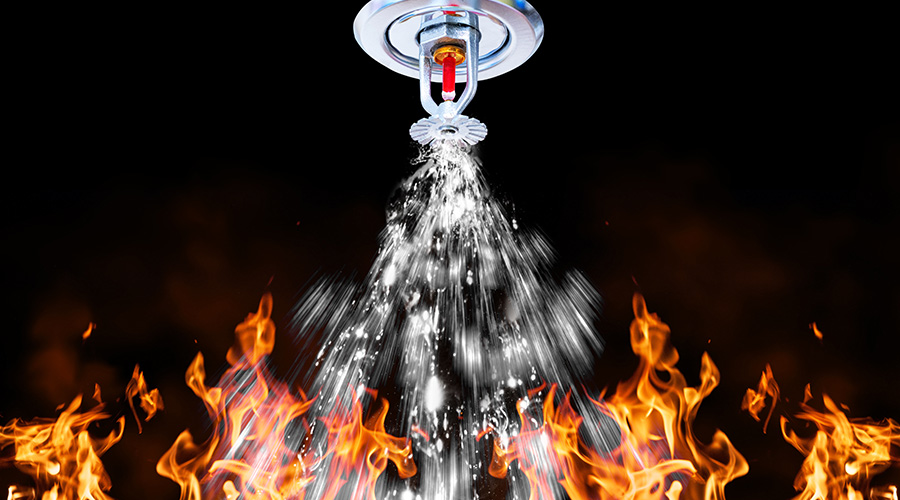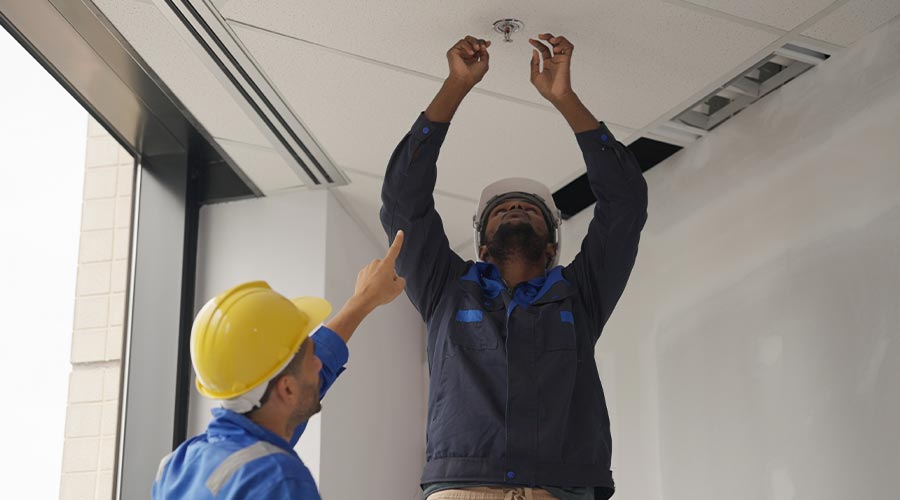Fire Safety Goes Beyond Code Compliance and ITM
Inspection, testing and maintenance of systems requires more than just the basic requirements.
Fire protection systems in commercial and institutional facilities often suffer from an “set it and forget it” mentality. Once installed, sprinklers, alarms and other fire safety systems can fade into the background until an inspection is due — or worse, until something fails during an emergency.
Experts warn that while most maintenance and engineering managers take care of the basic inspection cycles, too many managers neglect deeper requirements, such as proactive troubleshooting and staff training. The result: missed warning signs, failed inspections and heightened risk for both people and property.
“Not all of the requirements in the standards are followed,” says Tom Parrish, vice president of compliance and training for Telgian Fire Safety. “Facility managers usually complete the annual, semi-annual, and quarterly requirements, but often skip the three-year and five-year requirements. Also, because NFPA 25 is regularly updated with new requirements, they can be slow to bring their systems into compliance.”
Industry leaders say the solution is clear: go beyond minimum compliance, treat maintenance as a proactive safety strategy, and use training and technology to ensure systems perform when needed most.
Beyond the basics
Most managers know that quarterly and annual inspections are required. But experts stress that focusing only on those touchpoints leaves systems exposed to long-term risks.
“When inspections uncover additional maintenance work, facility maintenance teams are often forced by budget or time constraints to delay or not complete this work,” says Michael Joanis, chief operating officer for the National Fire Sprinkler Association (NFSA).
Joanis says skipping these system inspection intervals can result in sprinklers staying in service long past their reliable lifespan.
“NFPA 25 requires fast response sprinklers to be tested or replaced when they reach 25 years of service,” he says. “When this work is not completed, it is possible that recalled sprinklers or heavily loaded or corroded sprinklers are not identified and replaced.” Learn more about NFPA 25: Standard for the Inspection, Testing, and Maintenance of Water-Based Fire Protection Systems.
John Denhardt, vice president of engineering and technical services for the American Fire Sprinkler Association (AFSA), says one of the biggest oversights is how facility managers handle contractor scope.
“By far the most common mistake is assuming the inspection, testing, and maintenance (ITM) contractor covers everything,” he says. “Many only contract for annual ITM and miss the three-, five-, and 20-year requirements. NFPA 25 holds the owner responsible for ensuring all tasks are completed.
He adds that proactive testing often uncovers hidden risks.
“Main drain flow tests, required by NFPA 25, can catch issues with the public water supply to a building,” Denhardt says. “The typical issue is a fully or partially closed underground water supply control valve. If a fire occurs while the water supply is compromised, the sprinkler system will be affected. In fact, the number one cause of sprinkler system failure is a closed water supply control valve.”
Parrish agrees, noting that compliance is not just about doing the familiar requirements but about keeping up with code cycles.
“Some self-testing devices are coming into the market, and I would expect a shift along with some of the data collection systems becoming more common,” he says. “But facilities need to know which edition is being enforced in their area, as it could be a wide range.”
He notes that NFPA 72 governs fire alarm systems (Chapter 14), while NFPA 25 covers water-based sprinklers. Both are updated every three years. “Facilities must know which edition their local authority enforces — or risk falling behind,” Parrish says.
Joel Williams is a freelance writer based in Frankfort, Illinois.
Related Topics:













